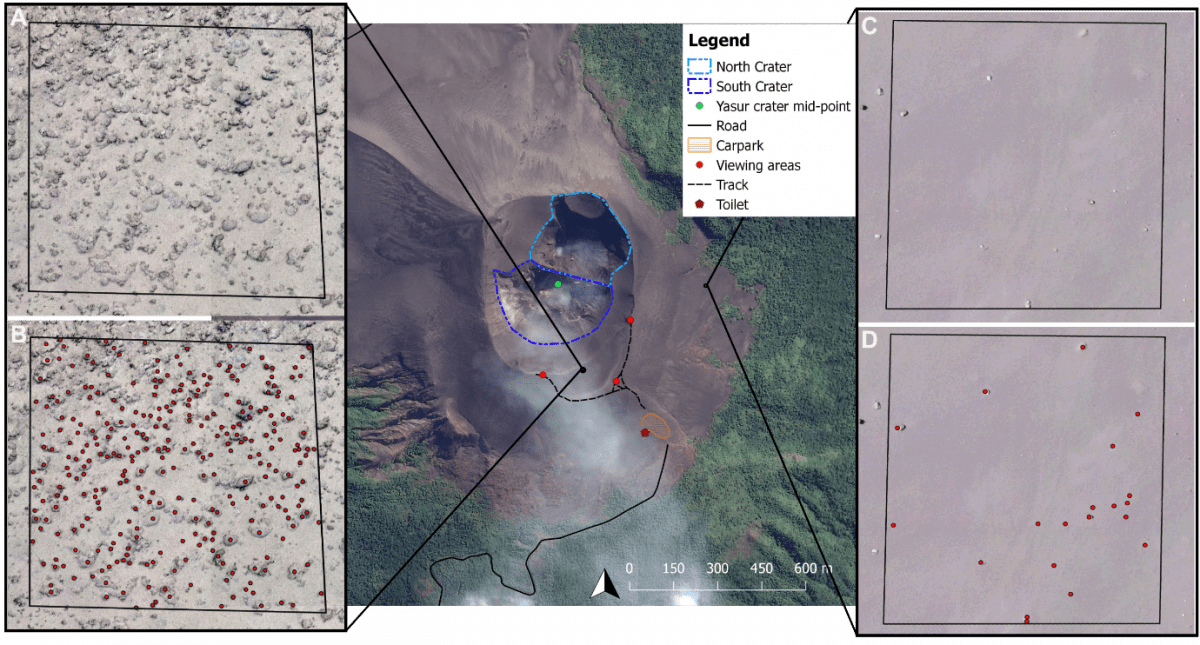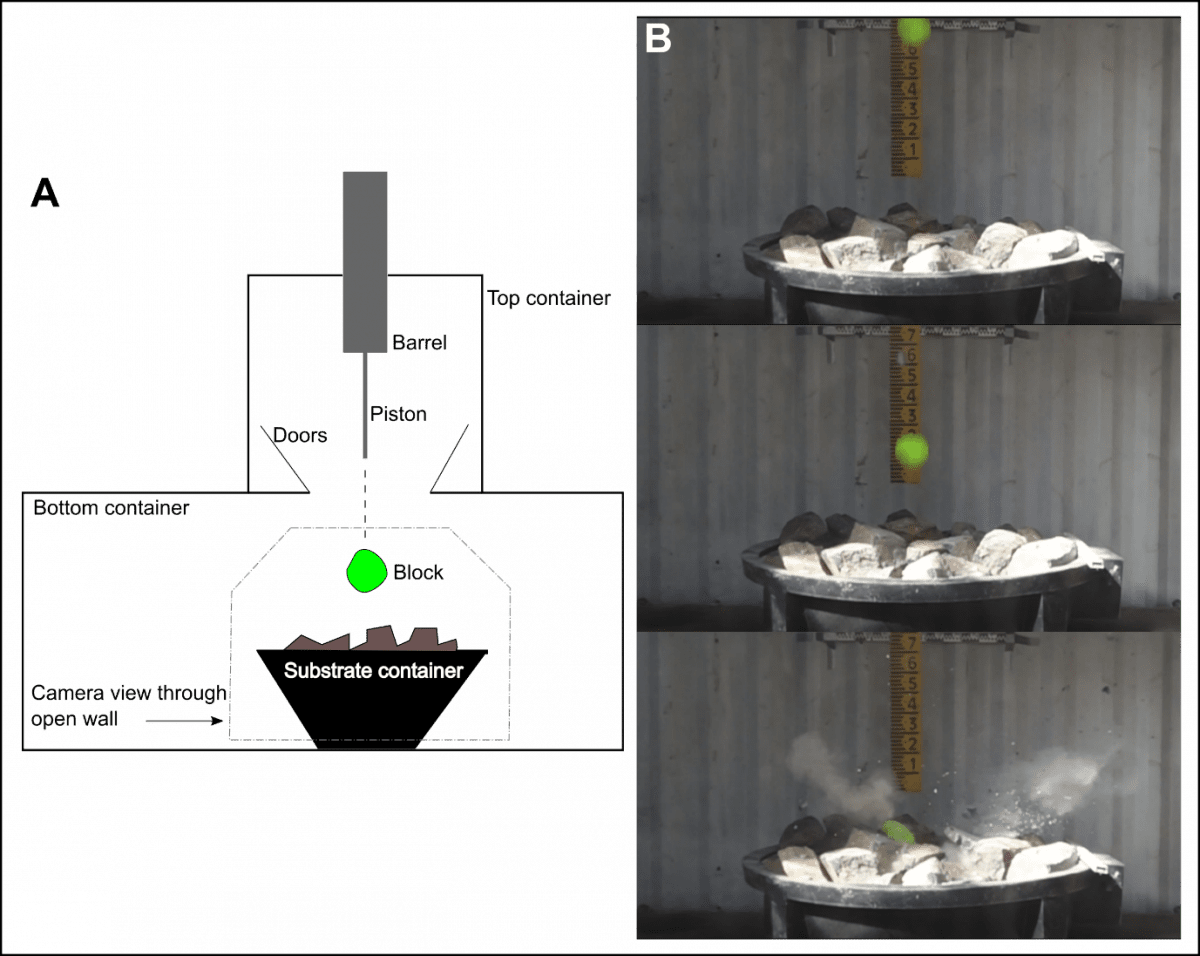By Dr Rebecca Fitzgerald
Volcanic ballistic projectiles (VBPs) are fragments of solid rock or molten lava ejected out of a volcano in explosive eruptions. They are one of the most common causes of deaths and injuries on volcanoes, as they can travel up to hundreds of metres a second, range up to tens of metres in diameter and land with very high temperatures (up to 1000°C). VBPs can also cause substantial damage and destruction of property and infrastructure. Despite this, VBP hazard, impact and risk research has trailed behind other volcanic hazards.
This means that hazard and risk managers are missing out on crucial information that would help them calculate risk to people on volcanoes.
We understand how VBPs travel, how far they travel, and their size, but little is understood of 1) how they are distributed within a ballistic field (are there more impacting in certain areas than other areas?); 2) the intensity of VBP hazard within the field (are there a lot impacting a small area, making it hard to escape being hit, or are there only a few impacting a large area?); and 3) how their distribution around the volcano changes over time (will they always impact the same area? Will a similar number be ejected in each eruption?). These questions affect the decisions hazard and risk managers make to keep people safe.
In addition, we know that an impact by a VBP can cause injury or death, yet this is not the only aspect that may cause injury. Impact ejecta are often produced when a VBP impacts the ground, either from interaction with debris (i.e. gravel, scoria) on the surface or from the VBP shattering. The ejecta can also increase the size of the area of hazard around a VBP and may have the ability to injure (Figure 1).

It is critical for hazard and risk managers to know the potential size of the hazard footprint that a person could be affected by and the number of VBP that may be experienced in an area to calculate risk effectively. This became the topic of my PhD thesis at the University of Canterbury.
To investigate how the number and density of VBP impacts change over a VBP field, we used a drone to take images of the area and map the location of VBPs at Yasur Volcano, Vanuatu.

Mapping revealed that the spatial density of VBPs, or number of VBPs in an area, varied across short distances, and decreased with distance from the crater (Figure 2). More VBPs were also observed on the south and south-east of the volcano than in other directions, indicating that eruptions were being preferentially directed in that direction.
The mapping results and video footage of eruptions taken while we conducted fieldwork suggests that eruption directionality changes over time, highlighting how dynamic the hazard is and the need for potential changes in eruption directionality to be considered in risk management decisions.

Pneumatic (compressed air) cannon experiments were used to investigate how impact ejecta can affect the hazard footprint from a single VBP (Figure 3). The amount of energy they travel with and how far they travel may change depending on the hardness of the surface the VBP impacts, the hardness of the VBP itself and how fast the VBP was travelling on impact with the ground. Therefore our testing included these factors. Findings showed that ejecta have the potential to cause injury or death but that this varied with the factors tested. This indicates a need to incorporate impact ejecta into hazard footprints as well as the VBP itself when calculating hazard intensity, vulnerability and risk to people from VBPs on volcanoes.
Improving our current understanding of how VBPs are distributed in space and time, and how hazard intensity varies over the hazard footprint will vastly improve our ability to assess and manage VBP hazard and risk.



